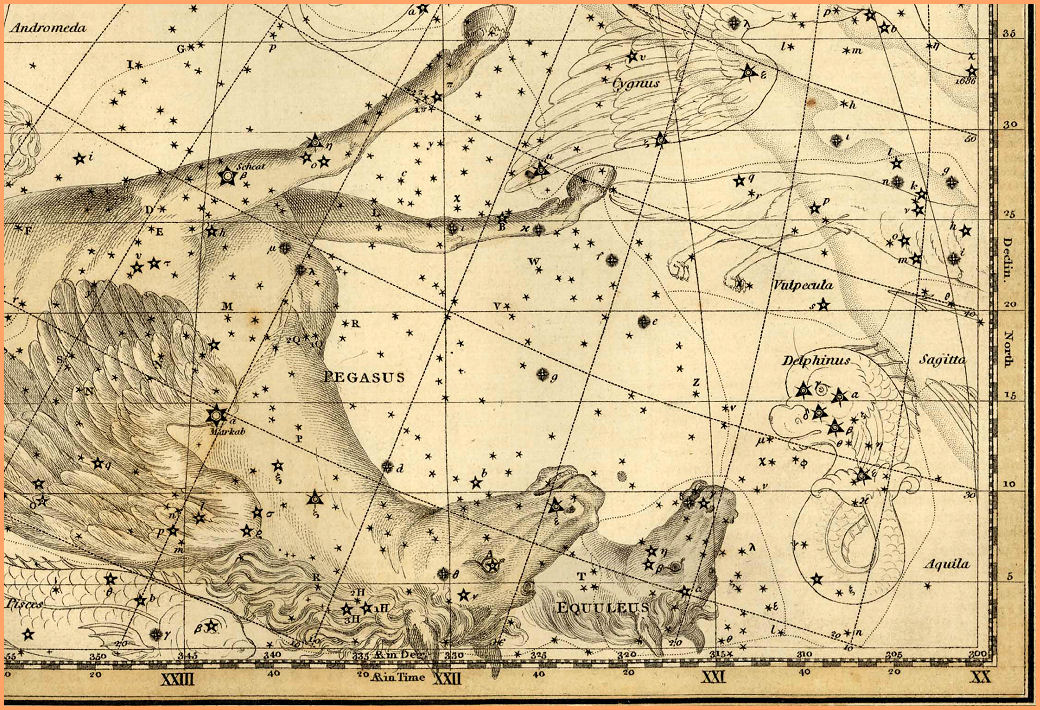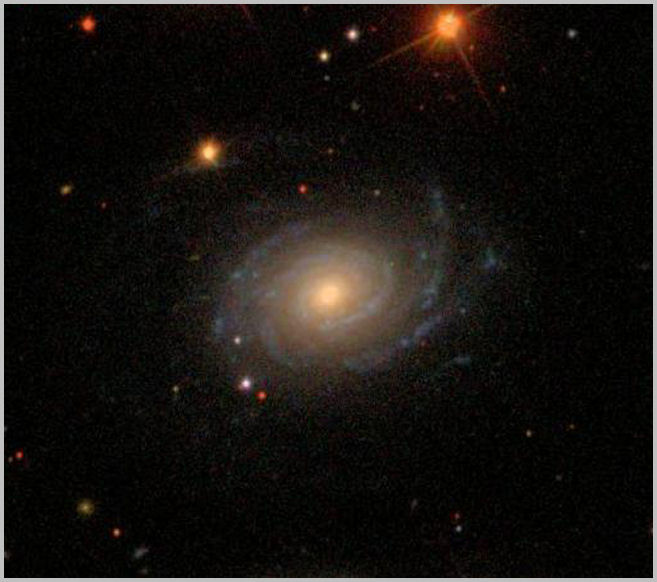| HOME |
|---|
EQUULEUS
The Little Horse.

Equuleus - Celestial Atlas by Alexander Jamieson - 1822
| HOME |
|---|

Often referred to as the foal of the heavens, Equuleus is the second smallest constellation in the sky. Only Crux, the southern cross, is smaller. But where Crux is inside the Milky Way and full of celestial treasures, Equuleus sits off to the side by itself in a relatively empty part of the sky, offering little save a scattering of faint stars. Despite its unremarkable presentation however, Equuleus is one of our most ancient constellations, and was one of the original 44 constellations recorded by Ptolemy in 149 AD. Traditionally, the stars depict only the head of a horse, situated right beside the head of the larger horse, Pegasus. Because Equuleus directly precedes Pegasus across the sky, it is sometimes referred to as Equus Primus, the first horse. Both horses traditionally appear upside down in the sky.
The mythology surrounding Equuleus is as vague as the constellation itself. The most common reference is to the tale of Hippe, the daughter of Chiron, the centaur (Centaurus). Becoming pregnant by a mortal, she feared punishment and tried to hide in the mountains. When her discovery became imminent she appealed to the goddess Artemis (Diana) who transformed her into a small horse and hid her in the heavens, protected by the great winged horse Pegasus - and that is where she hides to this day, peeking out from behind him, with just her head showing.

Alpha Equulei is the brightest star in the constellation at magnitude 3.79. It is named Kitalpha, from the Arabic "Al Kitah al Faras", which means part of the horse, as only the head of the horse is seen. Kitalpha is a binary system, consisting of a G0III yellow giant, and an A5V white main sequence star, in very close orbit only 60 million miles apart (99 million kms). The system is 190 light years away.
As small and insignificant as Equuleus might be, it does contain at least one star with a planetary system. The star, named HD 200964, is a G8IV yellow subgiant, about 222 light years away, with a magnitude of 6.64, just beyond the limit of naked eye visibility. Two planets have been discovered (so far) orbiting this star. They are named HD 200964c, which is almost exactly the size of Jupiter, and HD 200964b, which is twice that size. It is a planetary system that defies science at this point, because both planets orbit very close to each other, and very close to their parent star. Conventional wisdom would have the intense gravity of these giant planets creating havoc with each others orbits, but so far they appear stable, providing scientists with yet another cosmic riddle to solve. For more information on these and other extrasolar planets, visit NASA's New Worlds Atlas, and The Open Exoplanets Catalogue.
NGC 7040 is a spiral galaxy 281 million light-years away with a magnitude of 14.9.

|
|
|
|
|
|